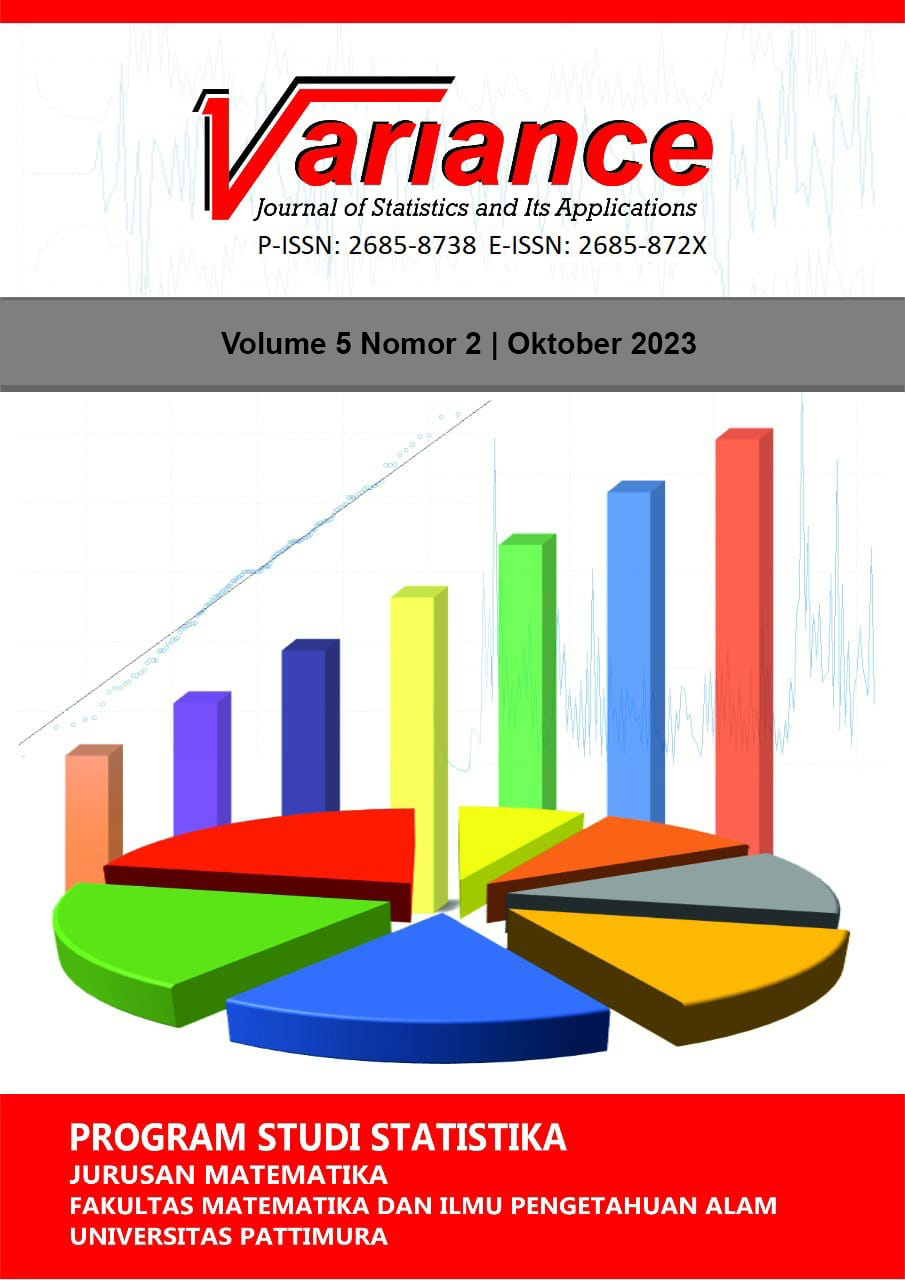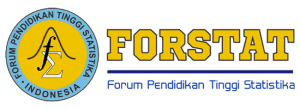IDENTIFIKASI JENIS KENDARAAN BERMOTOR DENGAN ALGORITMA CONVOLUTIONAL NEURAL NETWORKS
Abstract
Deteksi jenis kendaraan bermotor memainkan peran sentral dalam pengaturan lalu lintas, penegakan hukum, keamanan, dan sistem transportasi pintar. Dengan kemampuan luar biasa dalam mendeteksi dan mengklasifikasikan kendaraan dengan akurat, pihak berwenang dapat mengoptimalkan waktu sinyal lalu lintas, pengelolaan jalur, dan aliran lalu lintas secara efisien. Deteksi jenis kendaraan juga memberikan dukungan penting dalam penegakan peraturan lalu lintas dan memverifikasi kepatuhan kendaraan terhadap batasan tertentu, termasuk jalur kendaraan bersama, tol, dan peraturan parkir. Di sisi keamanan, teknologi ini berperan krusial dalam mengidentifikasi kendaraan mencurigakan, mencegah ancaman, dan meningkatkan keselamatan di area sensitif. Salah satu pendekatan populer dalam mendukung sistem deteksi jenis kendaraan bermotor otomatis adalah menggunakan algoritma deep learning, khususnya Convolutional Neural Network (CNN). Dengan kemampuannya mengenali pola dan fitur pada citra kendaraan menggunakan struktur jaringan syaraf tiruan, CNN mampu memberikan hasil yang luar biasa. Penelitian ini bertujuan mengembangkan sistem otomatis deteksi jenis kendaraan bermotor dengan menggunakan algoritma CNN. Hasil penelitian menunjukkan kinerja yang sangat baik, dengan rata-rata presisi sebesar 97,00%, sensitivitas/recall sebesar 97,60%, spesifisitas sebesar 97,59%, dan akurasi sebesar 97,30%.
Downloads
References
A. A. Fauzi et al., Pemanfaatan Teknologi Informasi di Berbagai Sektor Pada Masa Society 5.0. PT. Sonpedia Publishing Indonesia, 2023.
Y. Tang, C. Zhang, R. Gu, P. Li, and B. Yang, “Vehicle detection and recognition for intelligent traffic surveillance system,” Multimed Tools Appl, vol. 76, pp. 5817–5832, 2017.
L. Suhao, L. Jinzhao, L. Guoquan, B. Tong, W. Huiqian, and P. Yu, “Vehicle type detection based on deep learning in traffic scene,” Procedia Comput Sci, vol. 131, pp. 564–572, 2018.
Z. Wang, J. Zhan, C. Duan, X. Guan, P. Lu, and K. Yang, “A Review of Vehicle Detection Techniques for Intelligent Vehicles,” IEEE Trans Neural Netw Learn Syst, pp. 1–21, 2022, doi: 10.1109/TNNLS.2021.3128968.
R. Ravish, S. Rangaswamy, and K. Char, “Intelligent traffic violation detection,” in 2021 2nd Global Conference for Advancement in Technology (GCAT), IEEE, 2021, pp. 1–7.
H. Canton, “Economic Commission for Europe—UNECE,” in The Europa Directory of International Organizations 2021, Routledge, 2021, pp. 132–136.
A. Gholamhosseinian and J. Seitz, “Vehicle Classification in Intelligent Transport Systems: An Overview, Methods and Software Perspective,” IEEE Open Journal of Intelligent Transportation Systems, vol. 2, pp. 173–194, 2021.
H. Nguyen, L. Kieu, T. Wen, and C. Cai, “Deep learning methods in transportation domain: a review,” IET Intelligent Transport Systems, vol. 12, no. 9, pp. 998–1004, 2018.
M. Manana, C. Tu, and P. A. Owolawi, “A survey on vehicle detection based on convolution neural networks,” in 2017 3rd IEEE international conference on computer and communications (ICCC), IEEE, 2017, pp. 1751–1755.
F. Chollet, Deep learning with Python. Simon and Schuster, 2021.
I. Goodfellow, Y. Bengio, and A. Courville, Deep learning. MIT press, 2016.
G. Lou and H. Shi, “Face image recognition based on convolutional neural network,” China Communications, vol. 17, no. 2, pp. 117–124, 2020, doi: 10.23919/JCC.2020.02.010.
Y. Lu, “Food image recognition by using convolutional neural networks (cnns),” arXiv preprint arXiv:1612.00983, 2016.
Z. Liang et al., “CNN-based image analysis for malaria diagnosis,” in 2016 IEEE international conference on bioinformatics and biomedicine (BIBM), IEEE, 2016, pp. 493–496.
R. M. Oxford and L. G. Daniel, “Basic Cross-Validation: Using the" Holdout" Method To Assess the Generalizability of Results.,” Research in the Schools, vol. 8, no. 1, pp. 83–89, 2001.
Y. N. Nabuasa, “Pengolahan Citra Digital Perbandingan Metode Histogram Equalization Dan Spesification Pada Citra Abu-Abu,” JI Komputer, UN Cendana, C. Digital, and E. Histogram, vol. 7, no. 1, pp. 87–95, 2019.
M. Athoillah, “Klasifikasi Kendaraan Bermotor Dengan Multi Kernel Support Vector Machine,” Buana Matematika : Jurnal Ilmiah Matematika dan Pendidikan Matematika, vol. 8, no. 1 SE-, pp. 1–8, Jun. 2018, doi: 10.36456/buanamatematika.v8i1:.1515.
M. Zufar and B. Setiyono, “Convolutional neural networks untuk pengenalan wajah secara real-time,” Jurnal Sains dan Seni ITS, vol. 5, no. 2, p. 128862, 2016.
K. O’Shea and R. Nash, “An introduction to convolutional neural networks,” arXiv preprint arXiv:1511.08458, 2015.
S. Albawi, T. A. Mohammed, and S. Al-Zawi, “Understanding of a convolutional neural network,” in 2017 international conference on engineering and technology (ICET), Ieee, 2017, pp. 1–6.
J. Mlyahilu, Y. Kim, and J. Kim, “Classification of 3D Film Patterns with Deep Learning,” Journal of Computer and Communications, vol. 07, pp. 158–165, Jan. 2019, doi: 10.4236/jcc.2019.712015.
J. Wu, “Introduction to convolutional neural networks,” National Key Lab for Novel Software Technology. Nanjing University. China, vol. 5, no. 23, p. 495, 2017.
F. T. Admojo and Y. I. Sulistya, “Analisis performa algoritma Stochastic Gradient Descent (SGD) dalam mengklasifikasi tahu berformalin,” Indonesian Journal of Data and Science, vol. 3, no. 1, pp. 1–8, 2022.
A. Baratloo, M. Hosseini, A. Negida, and G. el Ashal, “Part 1: Simple Definition and Calculation of Accuracy, Sensitivity and Specificity,” Emerg (Tehran), vol. 3, no. 2, pp. 48–49, 2015.
Copyright (c) 2023 VARIANCE: Journal of Statistics and Its Applications

This work is licensed under a Creative Commons Attribution-NonCommercial-ShareAlike 4.0 International License.



 Editorial Team
Editorial Team
 Peer Review Process
Peer Review Process Focus & Scope
Focus & Scope Open Acces Policy
Open Acces Policy Privacy Statement
Privacy Statement Author Guidelines
Author Guidelines Publication Ethics
Publication Ethics Publication Fees
Publication Fees Copyrigth Notice
Copyrigth Notice Plagiarism Screening
Plagiarism Screening Digital Archiving
Digital Archiving





